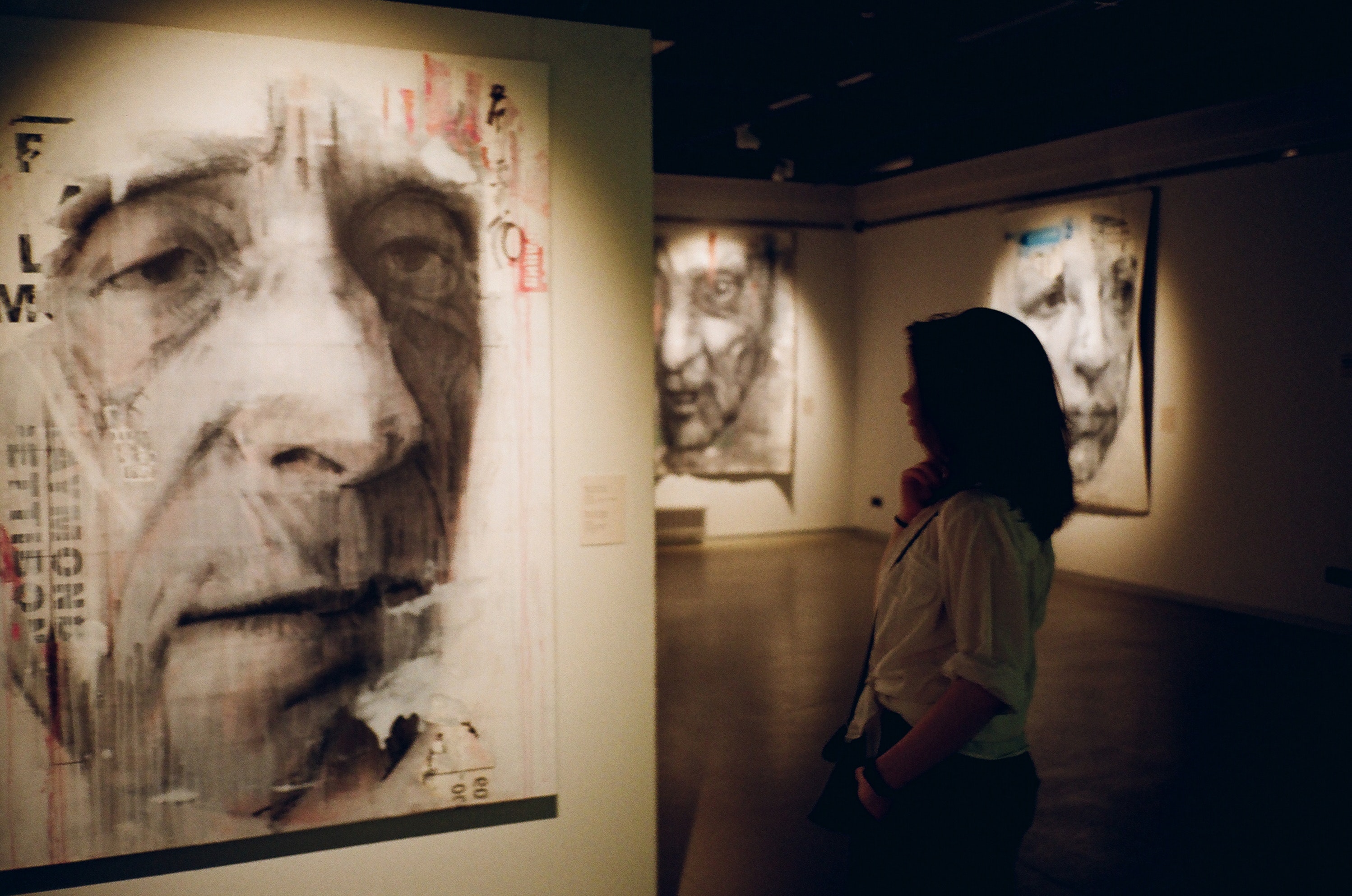In order to begin defining what constitutes a good museum exhibit design, I would first have to touch upon the role it plays within an organization. It is here (in exhibitions and public displays) that direct contact between the visitor and the museum’s collections takes place. It is here, where any individual, regardless of age, social and economic status, alone or as part of a group, has the opportunity and space to see the “real object,” and with the help of certain exhibition techniques, to communicate or interact with it.[1]

A visitor perusing artefacts at The Chhatrapati Shivaji Maharaj Vastu Sangrahalaya, formerly Prince of Wales Museum of Western India. Photo courtesy: Viral Kothari and Niofar Shamim Haja.
As museum curators and exhibit designers, it is our job to understand how visitors engage and interact with the curated object. Most people who go to museums do so with the idea of visiting the exhibition halls, and will even try to see all of them in a single visit, which is certainly a tall order! This is certainly the case in India, where the major museums and cultural spaces are viewed as tourist spots. Tourists from across the country who visit Delhi, Mumbai and other metros, make a brief stop at a museum in their day-long itinerary.
However, museum objects do not communicate by themselves. They need the interpretive support that curators, educators and designers bring to the table. A good understanding of target audience, spatial planning and process of developing an exhibit display needs to be ably supported by appropriate lighting and interpretation.
Beyond the exhibit design and display, other elements also come into play for a holistic viewing experience, including conservation, and health & safety issues. Finally, the feasibility and development of the exhibition itself will have to be considered. Does the exhibition have contemporary relevance to the geographical or cultural spaces underpinning it?
A multitude of complementary elements go into making a good display, including an understanding of what are the best practices for display and the requirement of the museum. In my next post, I will share a memorable museum visit while raising questions about the specific elements that make up a well-designed museum exhibit.
To the curator who is reading this post, share with us some of the key elements you keep in mind while planning an exhibition. And to our museum loving readers, tell us about your latest visit to a museum – what impressed you and how could the show have been better? We would love to hear from you!
[1] Herreman, Y. (in press). “Running a Museum: A Practical Handbook.” Display, Exhibits and Exhibitions.
About the Author
 Deepthi Radhakrishan is ReReeti’s Design & Learning Officer. She holds a degree in Design (NID, India) and master’s degree in Museum Studies (UEA, UK). She was the recipient of the prestigious Education Fellowship at the Sainsbury Center for Visual Arts (SCVA, UK). She is passionate about illustrating and designing outreach programmes for museum visitors. Get in touch with Deepthi for design and learning enquiries. She would love to hear from her readers.
Deepthi Radhakrishan is ReReeti’s Design & Learning Officer. She holds a degree in Design (NID, India) and master’s degree in Museum Studies (UEA, UK). She was the recipient of the prestigious Education Fellowship at the Sainsbury Center for Visual Arts (SCVA, UK). She is passionate about illustrating and designing outreach programmes for museum visitors. Get in touch with Deepthi for design and learning enquiries. She would love to hear from her readers.








Trackbacks/Pingbacks